The USO or United Services Organization is a private, nonprofit organization that provides morale and recreational services to members of the U.S. military worldwide.
It has a base near the city centre of Seoul called "Camp Kim". I read through many reviews on the web that only the tours organized by the USO gives you access to tour the conference row area (the blue coloured huts where representatives from the two Koreas hold meetings) inside the DMZ.
In order to join the tours organized by the USO in Korea, I had to email them and book in advance. Their website is not very good and not updated so I had to email them to get the most current schedule. In addition on their website, it says that you have to pay them in advance in order for you to reserve your seats. It doesn't really help that they have no online payment and after I phoned them, they said that I could pay by credit card but that I would get no receipt of the transaction or that I could come in early and pay on the day of the tour. Being wary of giving out my credit card number over the phone with no receipt in return, I opted to choose to pay on the day of the tour. The civilian price was $44 USD per person.
The tour starts quite early and we had to get to the USO Korea "Camp Kim" by 7:30 am.
The USO offices (in reality, these pictures were taken on our way back to Seoul)


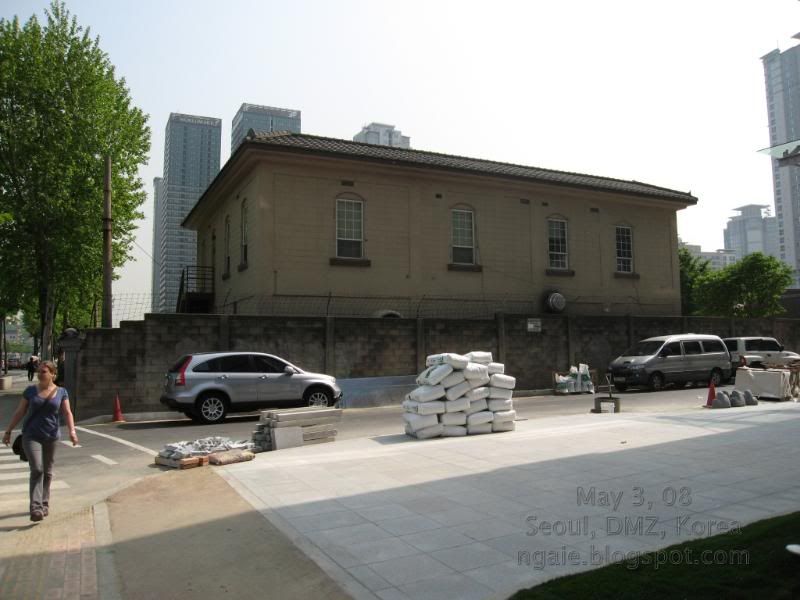
Heading out on the freeway towards the DMZ, we past the 63 Building (3rd tallest building in South Korea) in the Yeouido district of Seoul (one of Seoul's business districts).

The National Assembly building.
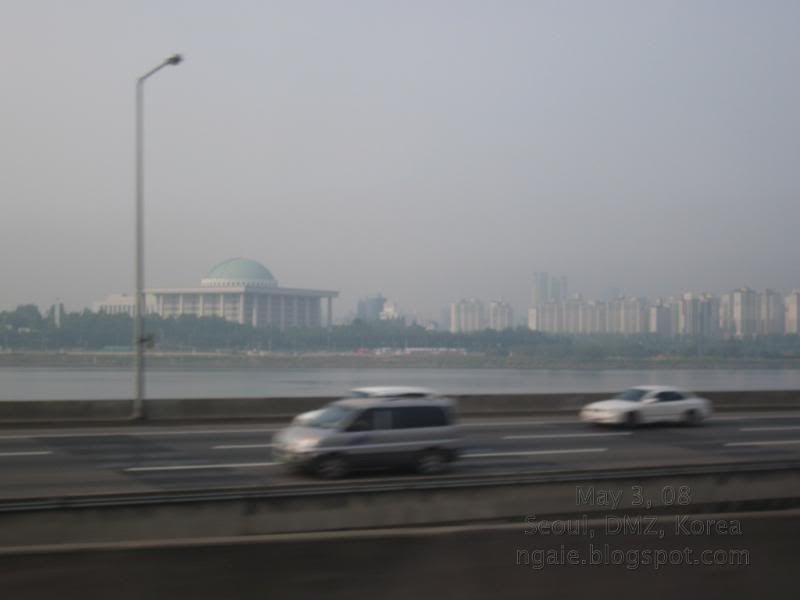
On the freeway heading towards the DMZ, the west side of the freeway all had barbed-wire, all built during the 1960s to prevent North Korean infiltration according to our volunteer tour guide and I saw that some of the stations were still manned.
Our first stop was a mandatory visit to a gift shop. Koreanized junk food.
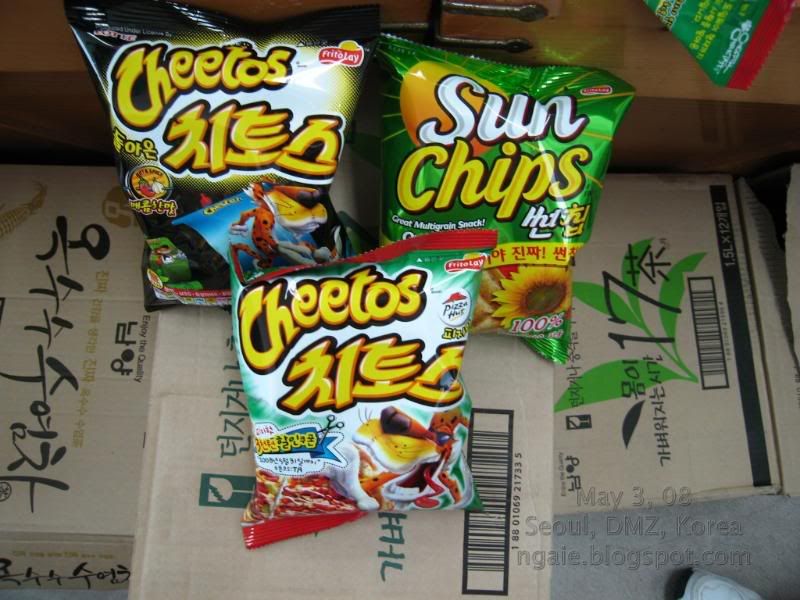
Next was a mandatory briefing session where we had to sign our waivers basically saying if something goes wrong, its your own fault.
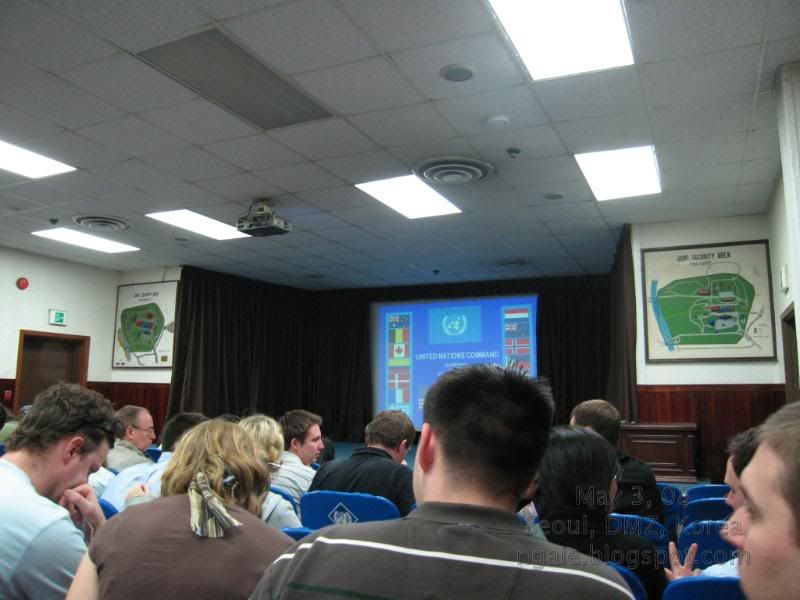


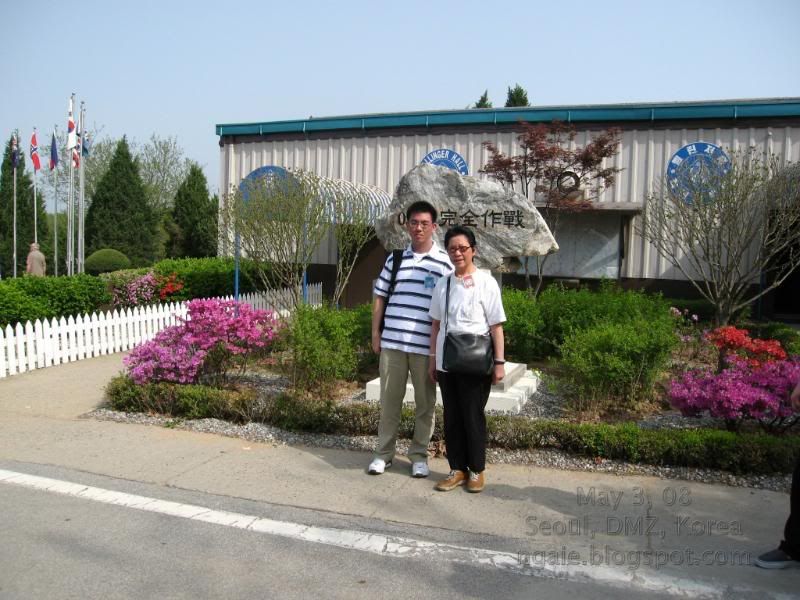

Heading towards conference row.
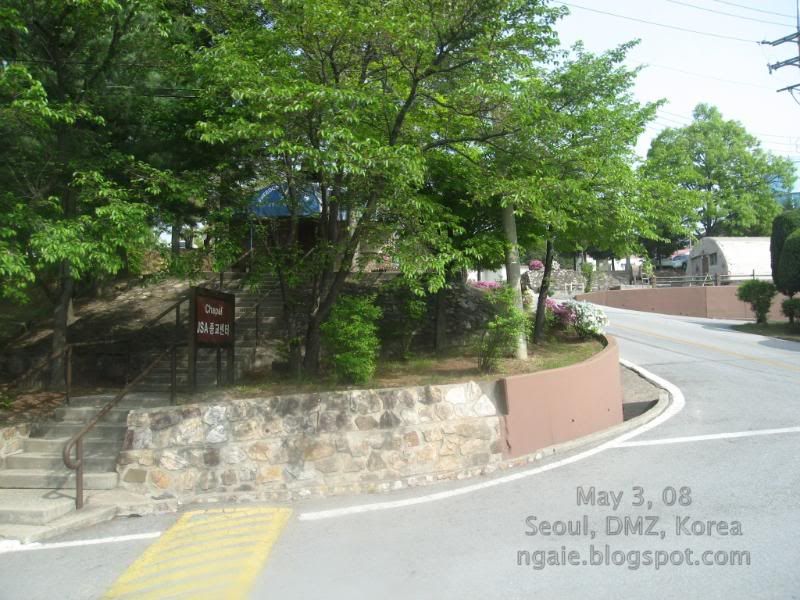
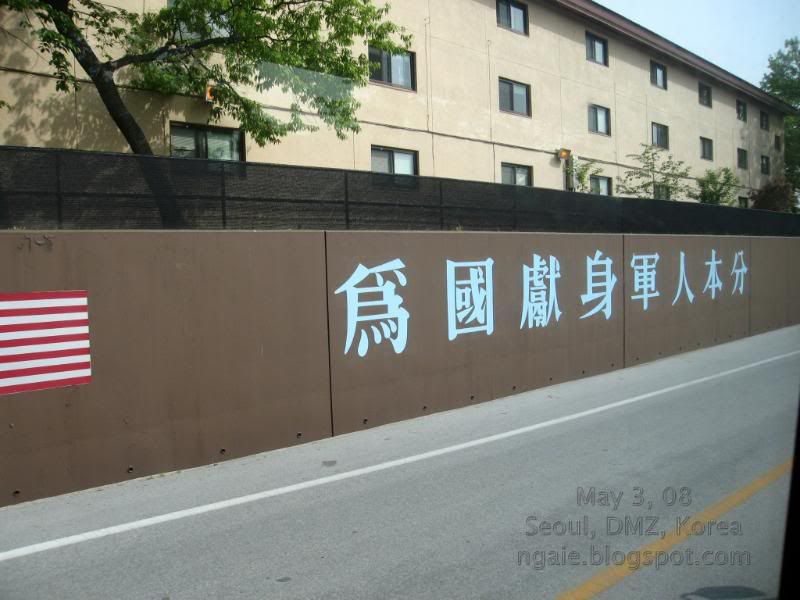
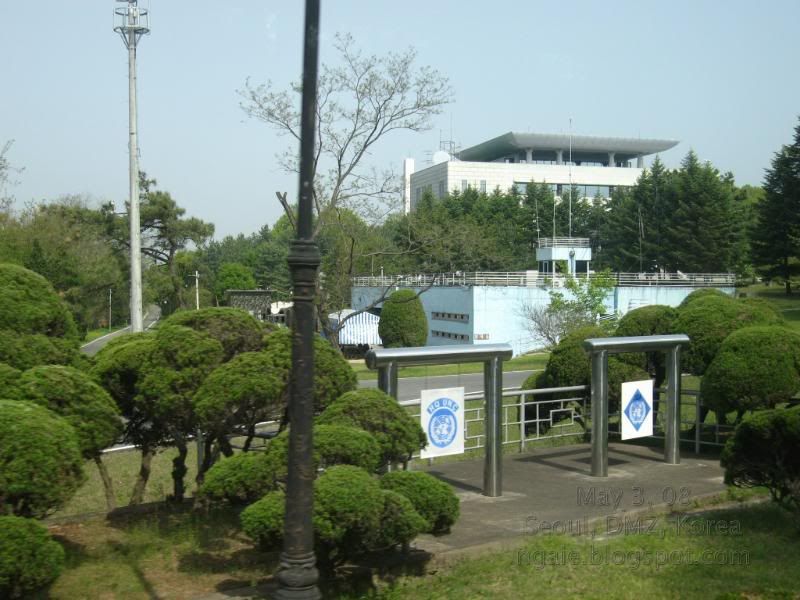
The Reunification Hall which was built for the purpose for holding meetings for Korean families separated during the Korean war. It has never been used for its purpose because it is on the South Korean side of the border and the North refuses to let its citizens meet their Southern relatives on the South Korean side for fear of defection.
To visit the conference row, we had to walk through the Reunification Hall and they were very strict on telling us we could not bring any bags or any kind, including purses.

Our Military Police guide giving us a briefing.


The South Korean soldier in his Tae Kwon Do stance.
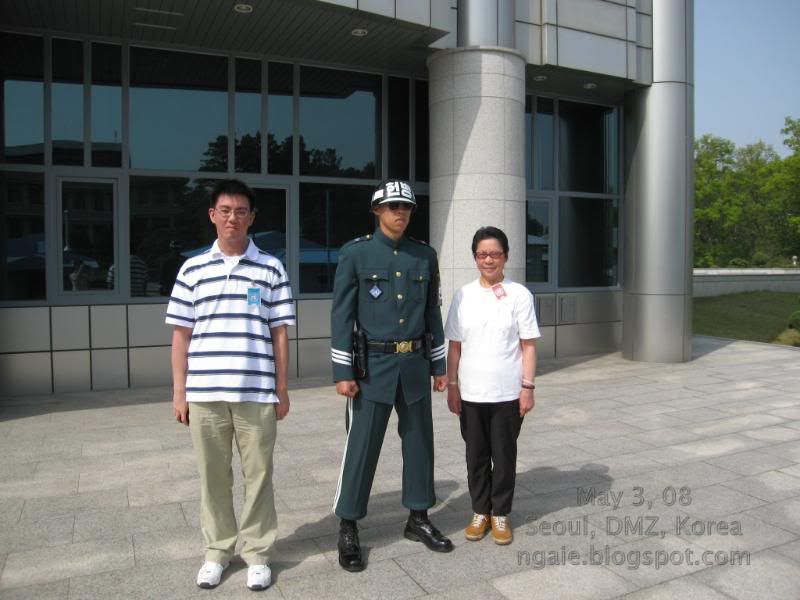
We did not have free moving access to the area. We were only allowed to take pictures from the steps.

Inside the conference rooms. It straddles the border between the two Koreas.

The border between the two Koreas. The concrete stab of freedom. Tyranny and oppression on one side, freedom and liberty on the other. Interestingly, our American Military Police guide is not allowed to step into the North Korean side inside the conference room.
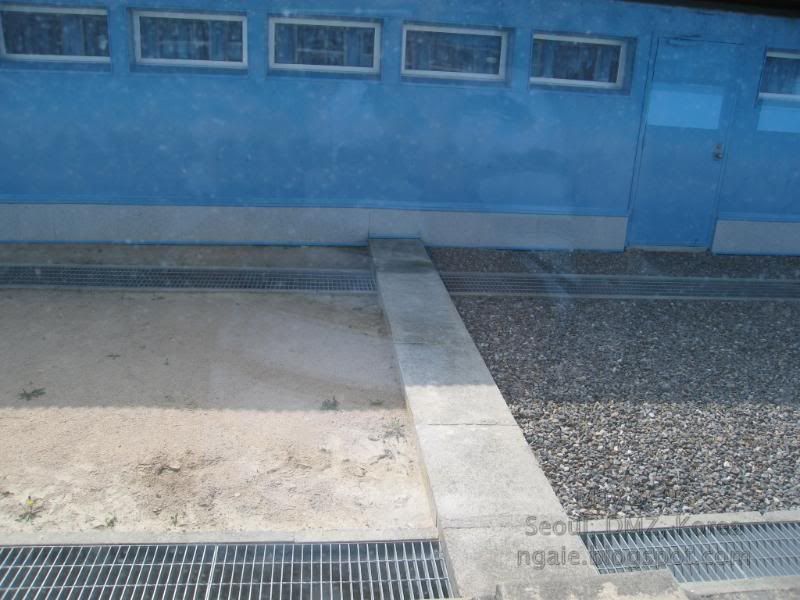
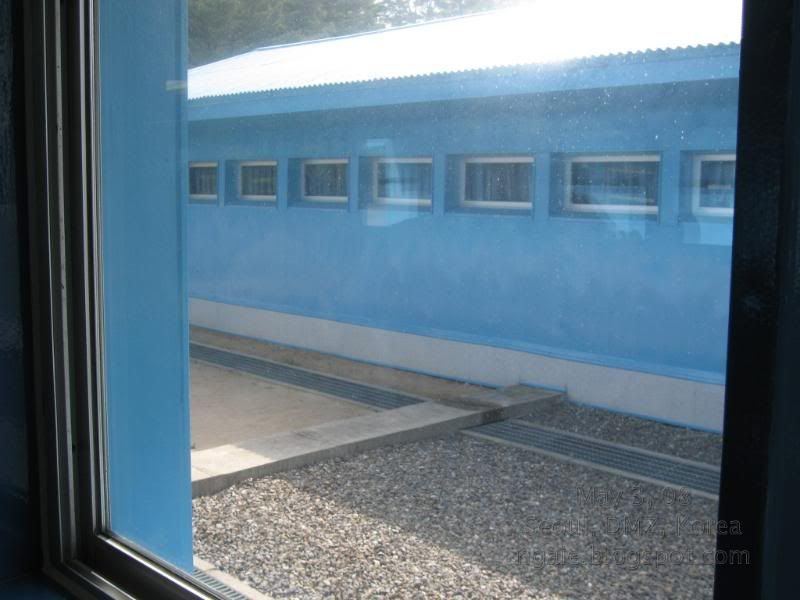
The door to North Korea.
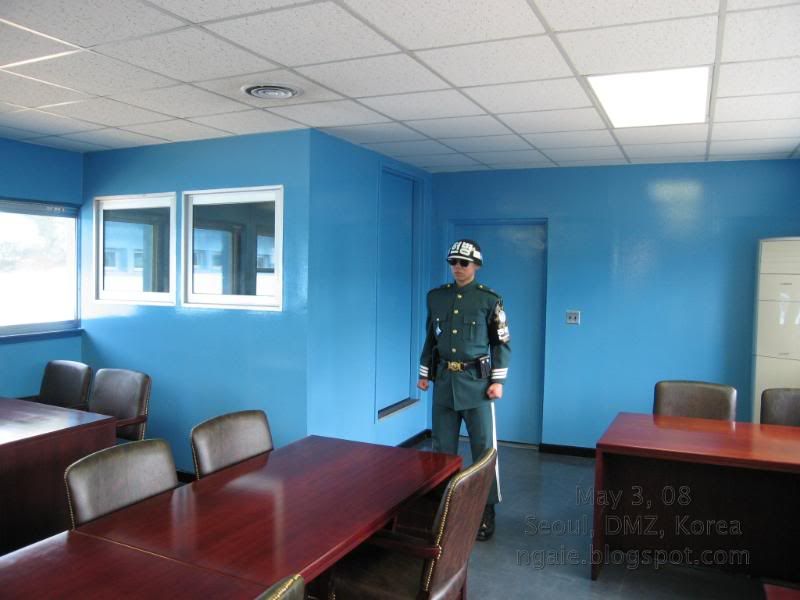
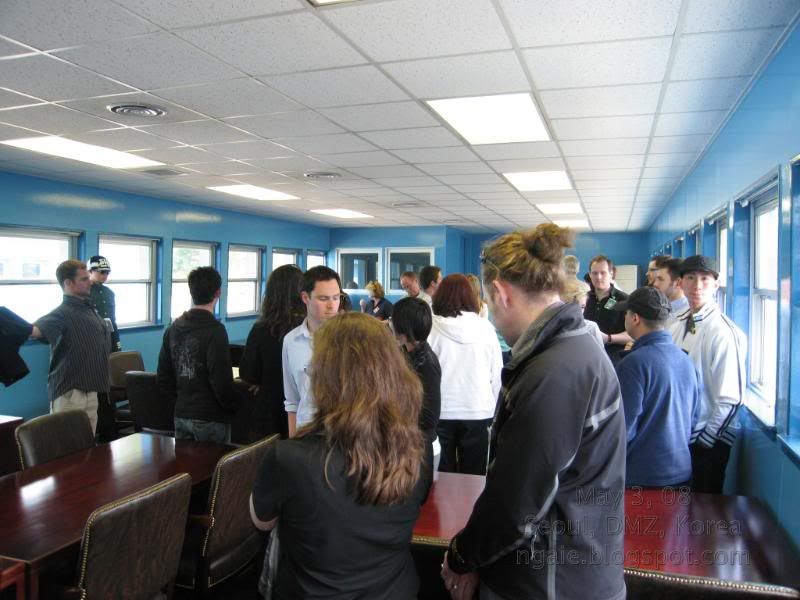
Driving away from the conference row area en route to the lookout point to North Korea.

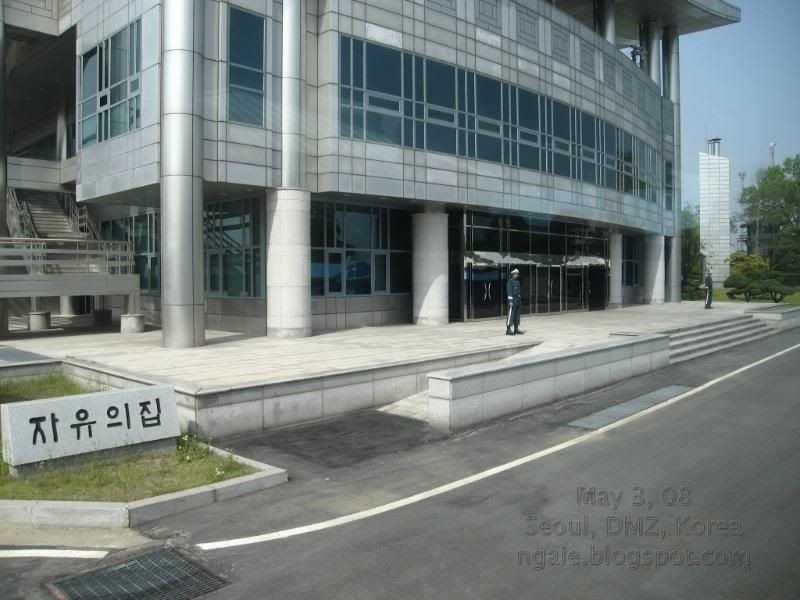

The lookout point, Another briefing.

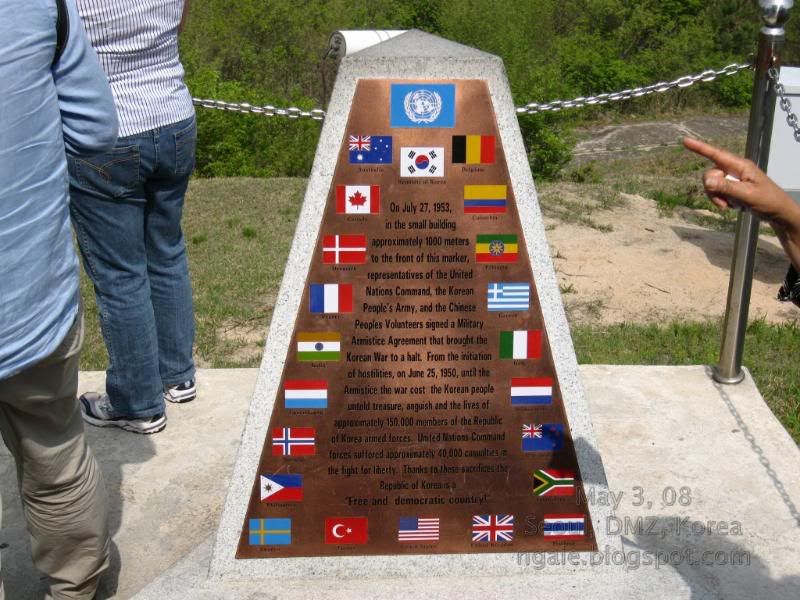
The largest flagpole in the world on the North Korean side, and the Propaganda Village (no one lives there, just like a movie set to show off the worker's paradise of North Korea) in the background.

Next we drive by the Bridge of No Return. It was used for prisoner exchanges at the end of the Korean War in 1953. The name originates from the fact that prisoners were given the choice to remain in the country of their captivity or cross over to the other country. But if they chose to cross the bridge, they would never be allowed to return. (From Wikipedia)
It was also the site of the Axe Murder Incident. It refers to the killing of two United States Army officers by North Korean soldiers on August 18, 1976 in the Joint Security Area (JSA) located in the Korean Demilitarized Zone (DMZ) which forms the de facto border between North and South Korea. The killings and the response three days later (Operation Paul Bunyan) heightened tensions between North and South Korea and as well as their respective allies, China and the United States of America. (From Wikipedia)
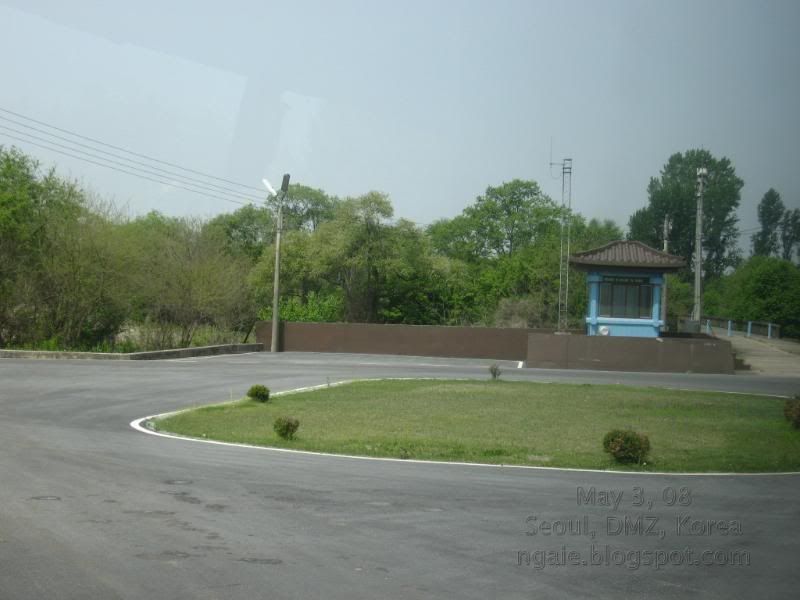
The Bridge of No Return.
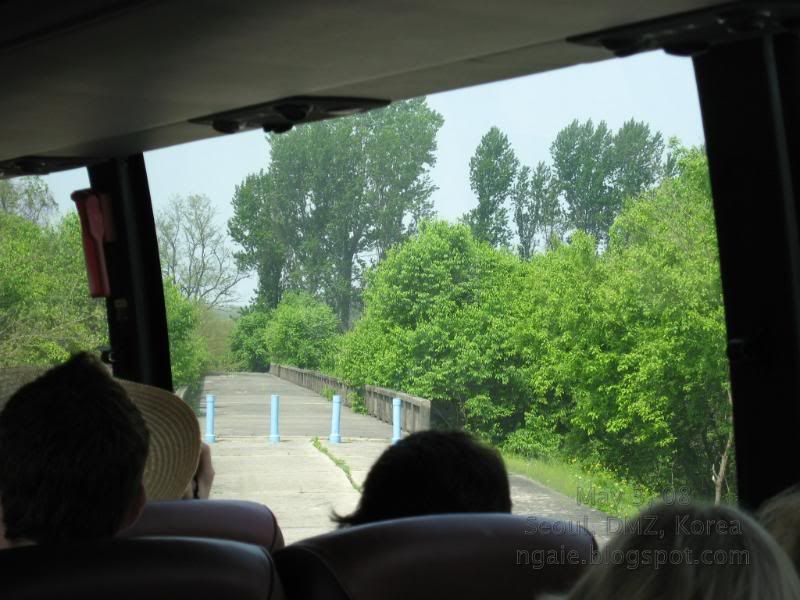
Next we went for lunch at some Korean restaurant inside a village inside the DMZ. Price was 10,000 won per person. Although they said it was a Korean "BBQ", the beef seemed more like it was boiled but at least the portions were big.
After lunch we went to another DMZ lookout point were we could look at North Korea through binoculars.

After that we went to visit the Infiltration Tunnels. It is basically a tunnel the North Koreans dug during the 1970s to try to invade the South. There was nothing to see other than walking down a VERY LONG slope and walking through the damp tunnel that the North Koreans dug.
The entrance to it.
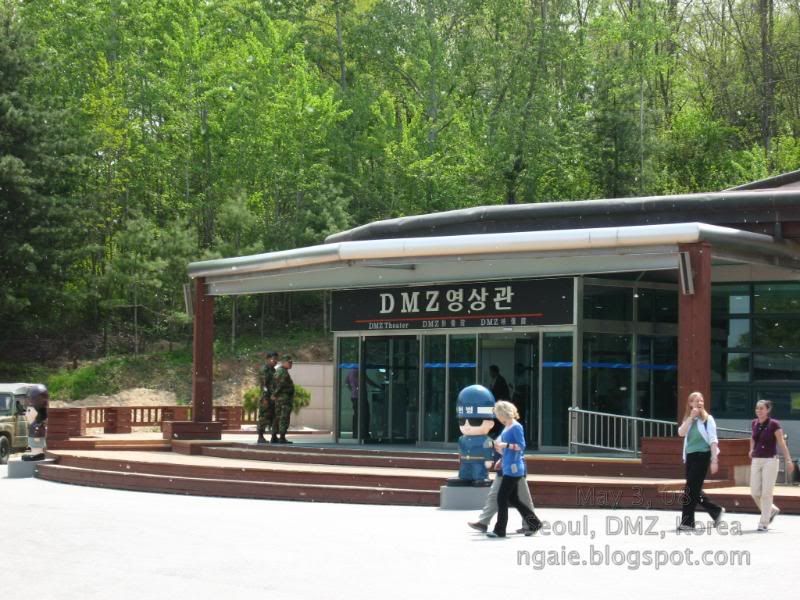
After that the tour was over and we arrived by in Seoul. This is the Independence Gate.
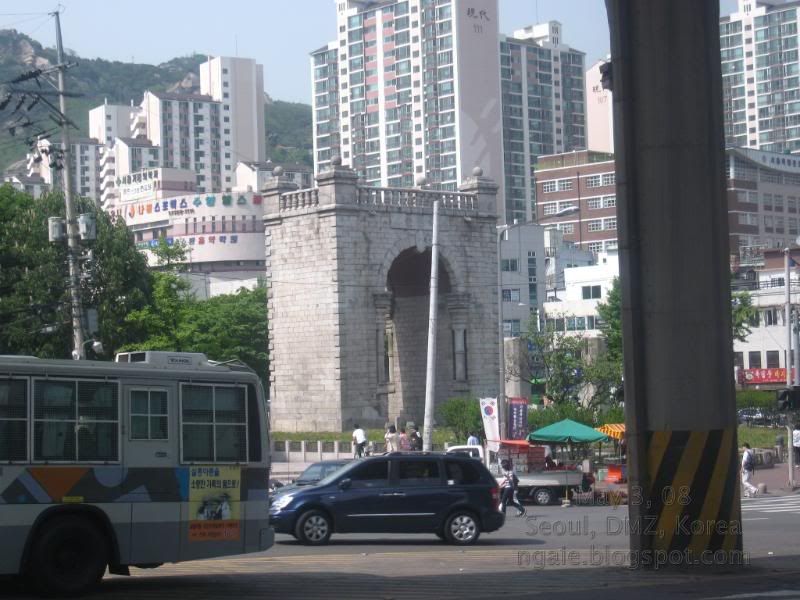
The area around the USO Korea base.

Souvenirs from the gift shops. The "limited edition" plaque cost 40,000 won I think. Around $40~.


4 comments:
Wow, every informative and good read. I've never been to Korea before so this is all new. it's amazing how strict the tour was, but I can imagine why. I just found it funny how the ground on the two sides on the border has different kind of ground, one is flat and one has rocks. I dunno if that means anything, but it's funny how it's different.
thanks, this was very interesting. i was thinking about doing this tour next month. i have a very long stopover in incheon, about 14 hours, and want to do this tour. how long did it run for? and how did you get to the uso office? did you take a train? just wondering. any help is appreciated. thanks!
Hi,
What was the email you contacted to sign up for the tour? I've been looking for awhile now. Thanks!
"Hi,
What was the email you contacted to sign up for the tour? I've been looking for awhile now. Thanks!"
It seems that they changed their booking system. You need to contact the travel agency listed on the USO website.
http://affiliates.uso.org/korea/default.cfm?contentid=349
When I went, they handled the DMZ tour bookings by themselves.
Post a Comment